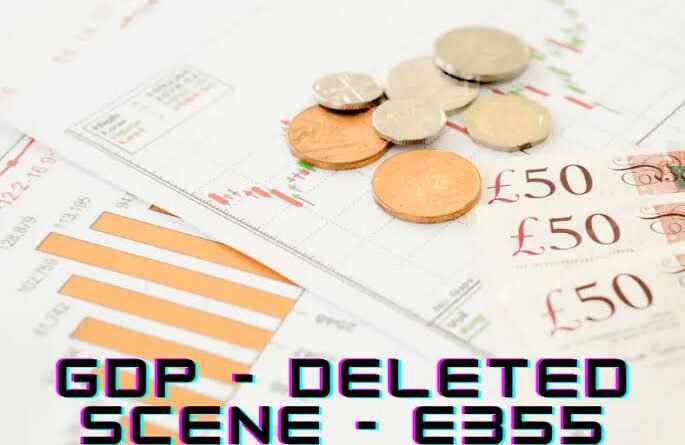The Impact of GDP on Economic Policy: An In-Depth Analysis
Introduction
Gross Domestic Product (GDP) is a critical economic indicator used by governments, economists, and policymakers to gauge the health and performance of an economy. This comprehensive analysis delves into the intricate relationship between GDP and economic policy, exploring how GDP data informs policy decisions and impacts economic stability and growth.
What is GDP?
Gross Domestic Product Defined
Gross Domestic Product (GDP) represents the total monetary value of all goods and services produced within a country’s borders over a specific time period. It serves as a broad measure of overall domestic production and a key indicator of economic health.
Components of GDP
GDP is composed of four main components:
- Consumption: Household spending on goods and services.
- Investment: Business expenditures on capital goods and residential construction.
- Government Spending: Expenditures by government entities on goods and services.
- Net Exports: The value of a country’s exports minus its imports.
How is GDP Calculated?
Expenditure Approach
The expenditure approach sums up consumption, investment, government spending, and net exports to calculate GDP: GDP=C+I+G+(X−M)\text{GDP} = C + I + G + (X – M)GDP=C+I+G+(X−M)
Income Approach
The income approach aggregates total national income, including wages, rents, interest, and profits, to compute GDP.
Production Approach
The production approach, or value-added approach, calculates GDP by summing the value added at each stage of production.
Importance of GDP in Economic Policy
GDP as a Performance Indicator
GDP is a primary indicator of economic performance, guiding policymakers in assessing economic health and making informed decisions. A growing GDP indicates economic expansion, while a declining GDP signals contraction.
Influencing Fiscal Policy
Governments rely on GDP data to shape fiscal policies, including tax rates and public spending levels. For instance, during economic downturns, policymakers might increase government spending to stimulate growth.
Monetary Policy Decisions
Central banks use GDP trends to determine monetary policies. A robust GDP growth may prompt interest rate hikes to prevent inflation, whereas a sluggish GDP might lead to rate cuts to spur economic activity.
Economic Stability and GDP
Economic Cycles
GDP plays a pivotal role in identifying economic cycles—periods of expansion and contraction. Recognizing these cycles helps policymakers implement timely interventions to stabilize the economy.
Inflation Control
Monitoring GDP helps manage inflation. A rapid increase in GDP can lead to inflationary pressures, prompting central banks to adjust interest rates to maintain price stability.
GDP and Economic Growth
Long-term Growth Strategies
Sustainable GDP growth is essential for long-term economic stability. Policymakers design strategies to foster innovation, enhance productivity, and ensure balanced growth across sectors.
GDP Per Capita
GDP per capita measures average economic output per person and is used to compare living standards across countries. Higher GDP per capita often indicates better living conditions and economic prosperity.
Challenges in Using GDP
GDP Limitations
While GDP is a valuable tool, it has limitations. It doesn’t account for income inequality, environmental degradation, or unpaid work, which can distort the true picture of economic well-being.
Alternative Measures
To address GDP’s shortcomings, economists consider alternative measures like the Human Development Index (HDI), which includes health and education indicators, and the Genuine Progress Indicator (GPI), which factors in environmental and social well-being.
GDP in the Global Context
Comparing Economies
GDP is used to compare economic performance across countries, providing insights into global economic standings and helping identify emerging markets and investment opportunities.
International Trade and GDP
GDP influences trade policies and agreements. Countries with higher GDP often have stronger bargaining power in international trade negotiations, impacting global trade dynamics.
FAQs
What does GDP stand for? Gross Domestic Product.
How often is GDP calculated? Typically, GDP is calculated on a quarterly and annual basis.
Why is GDP important for policymakers? GDP provides crucial data for making informed fiscal and monetary policy decisions.
Can GDP measure economic well-being? GDP measures economic output but has limitations in assessing overall well-being.
What are the main components of GDP? Consumption, investment, government spending, and net exports.
Is GDP the only measure of economic health? No, other measures like HDI and GPI are also used to gauge economic well-being.
Conclusion
Gross Domestic Product is a fundamental indicator that shapes economic policies and reflects the health of an economy. While it has limitations, its role in guiding fiscal and monetary policies, understanding economic cycles, and comparing global economies is indispensable. By considering alternative measures alongside GDP, policymakers can gain a more comprehensive view of economic well-being and craft more effective strategies for sustainable growth.

